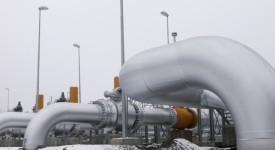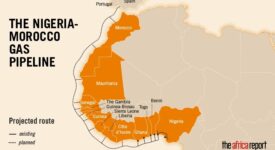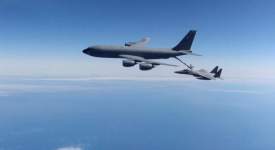Competition for control of oil and gas export installations and revenues has emerged as a main driver of the conflict that has divided Libya since 2014. This competition has manifested itself in a military struggle over the so-called oil crescent, a strip along the eastern coast of the Gulf of Sirte where four of Libya’s six hydrocarbon export terminals are located and through which more than 50 per cent of its crude oil exports leave the country.
The past four years have seen at least six offensives by rival forces to seize this sparsely inhabited area, the latest in June 2018. Each attack caused many deaths, widened social rifts and did extensive damage to the facilities, reducing Libya’s oil export capacity and inflow of hard currency. The fact is that hydrocarbon revenues are Libya’s lifeline. Prior to the 2011 war, Libya produced 1.65 million barrels per day of crude oil and 594 billion cubic feet of natural gas. Sales generated up to 96 per cent of government revenue and accounted for 65 per cent of gross domestic product (GDP).
This windfall allowed the Libyan state to amass cash reserves and run a debt-free economy until 2013, when armed groups’ forced closures of wells, pipelines and export terminals, mainly in the oil crescent, caused massive shortfalls in government revenues. The shutdown of the oil crescent’s terminals between 2013 and 2016 by Ibrahim Jedran, a local commander of the Petroleum Facilities Guard who later became leader of a short-lived movement for the autonomy of eastern Libya, was one of the main reasons (alongside other closures in the west of the country) that Libyan oil production plummeted from 1.4 million barrels per day in early 2013 to less than 400,000 barrels per day in early 2016, and oil sales revenues dropped from $40 billion to a meager $4.6 billion over the same period.
The struggle for control of the oil crescent and its wealth stands at the heart of this confrontation. Given Libya’s heavy reliance on oil and gas revenues and how incendiary the debate over the management of state funds has become, the questions of who guards and administers oil production and export facilities, and how oil revenues accruing to the Central Bank are allocated, are central to the conflict and how to resolve it. And the crisis that crippled crude oil production and export in June-July 2018 reflects this.
The June attack on the oil crescent stemmed from rival claims of legitimacy by two parallel forces in charge of protecting the installations, each calling itself the Petroleum Facilities Guard. Historical resentment in the east of the central government’s distribution of national wealth played a role; so did anti-Islamist narratives widespread in the east (often boosted by regional rivalry) that portray the Tripoli authorities as agents of the Muslim Brotherhood; and so did political leaders’ personal ambitions.
This report examines what sparked this latest crisis, how it unfolded and what has happened to settle it, at least for the time being. It argues that unresolved underlying tensions, if not proactively managed, could ignite another crisis within months. It is based on International Crisis Group’s (ICG) extensive reporting since 2014 on Libya’s oil industry, its economic institutions and the role these play in the conflict, including in the oil crescent. It stresses the centrality of the economic dimension to Libya’s civil war and the need to place oil economics at the heart of UN-mediated peacemaking efforts.
Ultimately, recent events in the oil crescent reveal three things. First, the institutional rift that has divided Libya since 2014 has reached a critical point and can no longer remain unaddressed. Secondly, when the international community speaks loudly and clearly with one voice in Libya, it can influence the course of events. Thirdly, concrete action on the economic front and follow-up measures to address reciprocal allegations of mismanagement of public funds can help defuse tensions and, likewise, change the course of events.
‘After the Showdown in Libya’s Oil Crescent’ – Report No. 189 by a Team of Authors – International Crisis Group / ICG.







